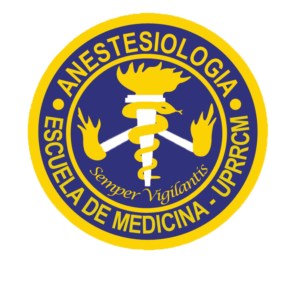Welcome to the Anesthesiology Residency Program at the University of Puerto Rico!
Our department, established in 1962, has the distinction of being the first, and to this day the only, Anesthesiology residency program on the island. Over the past six decades, we have proudly trained more than 85% of the anesthesiologists practicing in Puerto Rico, a legacy that reflects both our history of excellence and our commitment to the future of our specialty.
At the heart of our program lie the values that guide everything we do: vigilance, compassion, integrity, excellence, collaboration, and lifelong learning. Embodied in our motto Semper Vigilantis—Always Vigilant, these principles shape not only how we care for patients, but how we educate and mentor the next generation of anesthesiologists.
Our program is uniquely positioned within a first-class university system with affiliations to exceptional hospitals and institutions. These diverse clinical settings, combined with a dedicated and specialized faculty, provide our residents with broad, in-depth training in all anesthesiology subspecialties.
Graduates leave our program fully prepared with the skills and knowledge to face the diverse challenges of anesthesiology practice, reflected in our current 100% pass rate on the ABA written exam. More importantly, they leave as compassionate physicians and leaders dedicated to advancing patient safety and excellence in perioperative care.
I warmly invite you to explore and learn more about what makes our program special. As current Program Director, faculty member and former resident it is with great pride that I welcome you to join us in advancing the field of anesthesiology and consider becoming part of this proud tradition.
Dr. Carlos Vidal-Yordán
Residency Program Director

